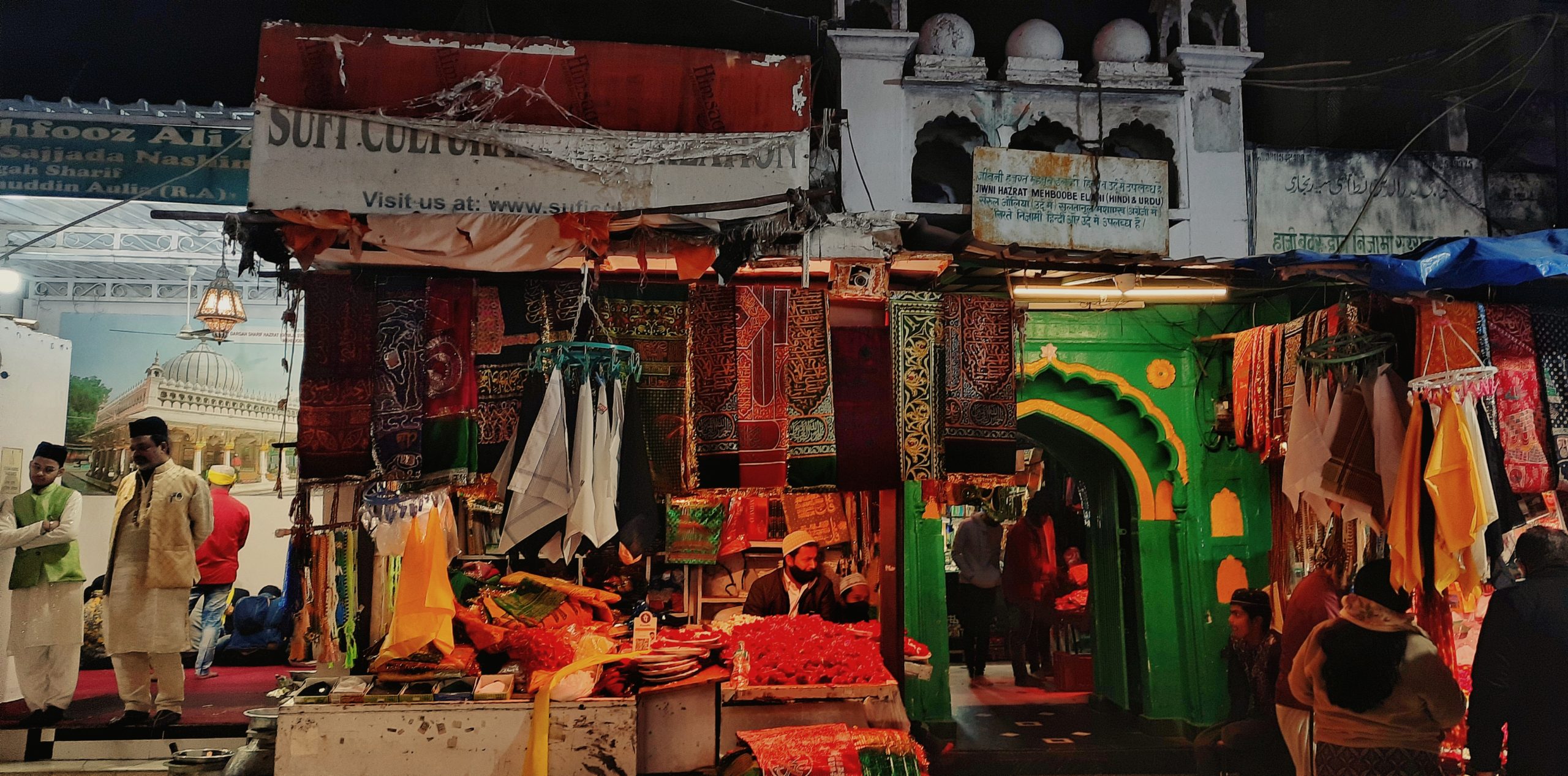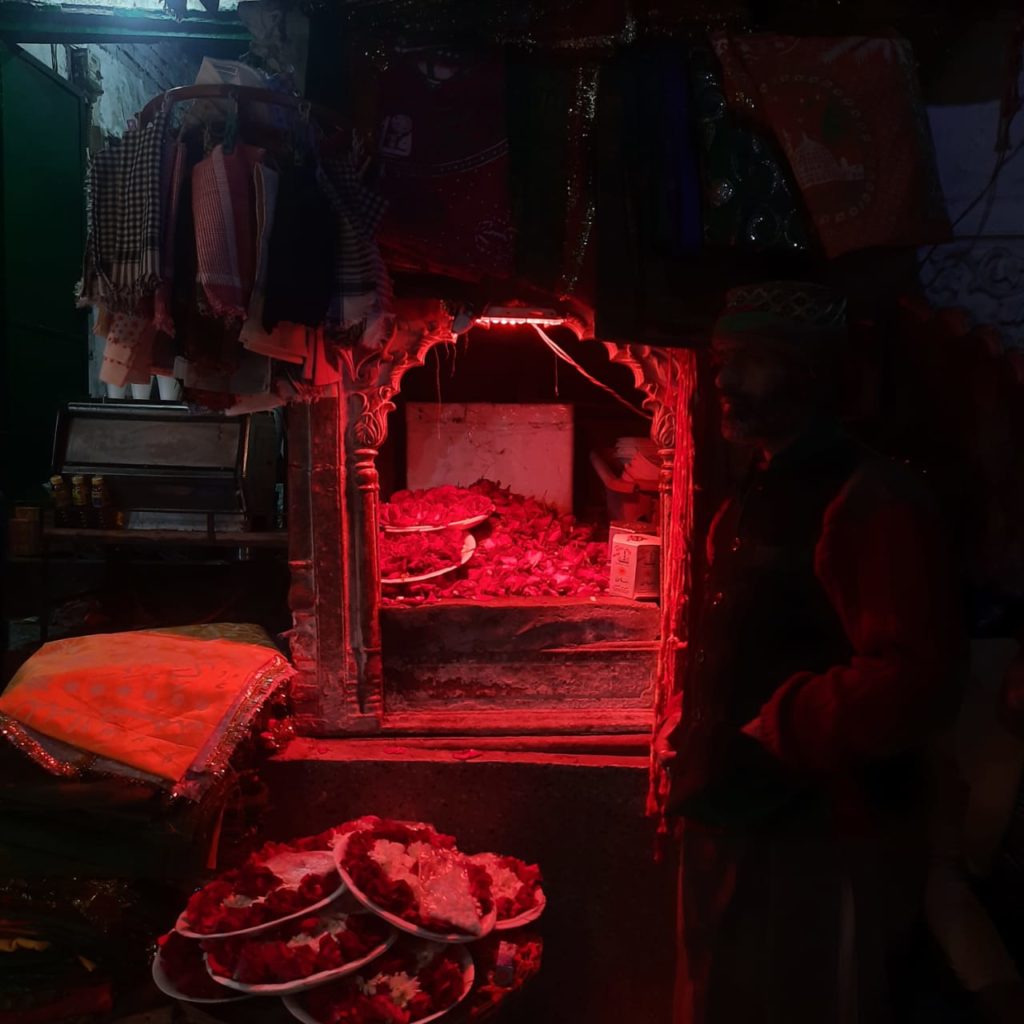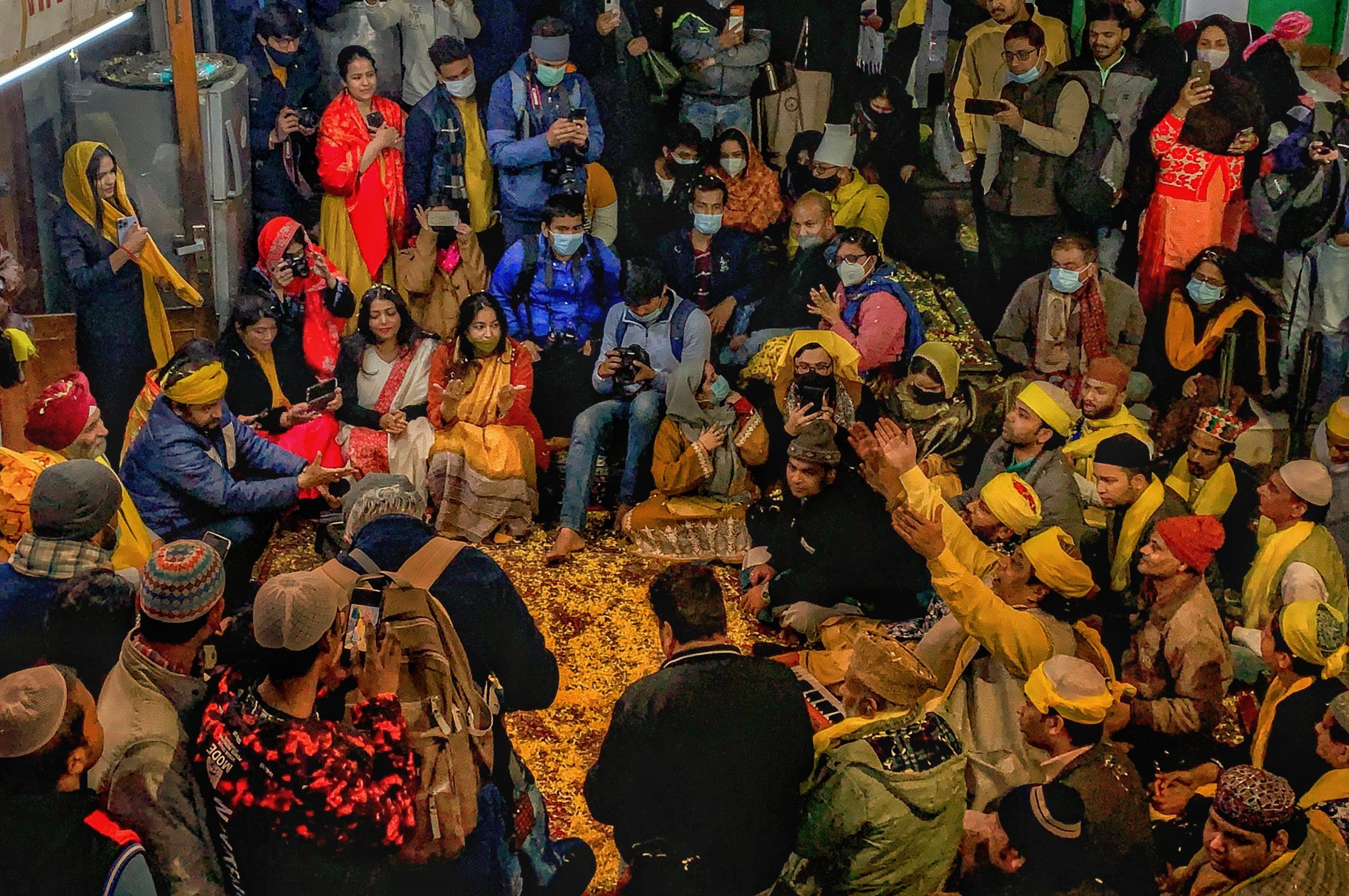The Nizamuddin Aulia Dargah Sharif in South Delhi has had a tradition of celebrating Basant Panchmi dating back to five centuries or more. This year, the festival was celebrated on 5 February with limited capacity following Covid protocols.

A view of the well-lit dargah
The story around why this particular festival found its way in the by-lanes of Nizamuddin has had many varying versions over the years – but one such version has gained the most relevant ground. It involves Khwaja Nizamuddin Aulia, a Sufi saint of the Chishti order who lived in Delhi between 1238 to 1325. While he didn’t have any children of his own, he was very close to his sister’s son, Khwaja Taqiuddin Nuh – a revered poet of the time. But when the nephew succumbed to an illness, Nizam was left heartbroken and grieved for a long time.

Amir Khusrau, the most loved disciple of Khwaja Nizamuddin, longed to see him smile sooner than later. It so happened that one day, Khusrau saw a few ladies walking in yellow sarees, carrying mustard flowers. Intrigued, he asked them where they were headed and found out that they were going to celebrate Basant Panchami – the festival of spring. An idea struck him and he ended up at the Nizam’s wearing a yellow saree and singing the traditional spring song of Purbi dialect, ‘sakal ban phool rahi sarson’. It is said that the Nizam was so amused to see his dearest Amir Khusrau in a saree that he could not help but smile.

What was done out of humour ended up cheering up the Nizam. From then onwards, it became a tradition to celebrate the festival in the best of spirits at the dargah. While many still seem to be unaware about this tradition, the city that was once home to the greatest Qawwals and patronsstill continues to have a syncretic culture which many know as the ‘Ganga-Jamuni tehzeeb’.

For more stories that cover the ongoings of Delhi NCR, follow us on:
Instagram: https://www.instagram.com/thepatriot_in/
Twitter: https://twitter.com/thePatriot_in
Facebook: https://www.facebook.com/Thepatriotnewsindia





